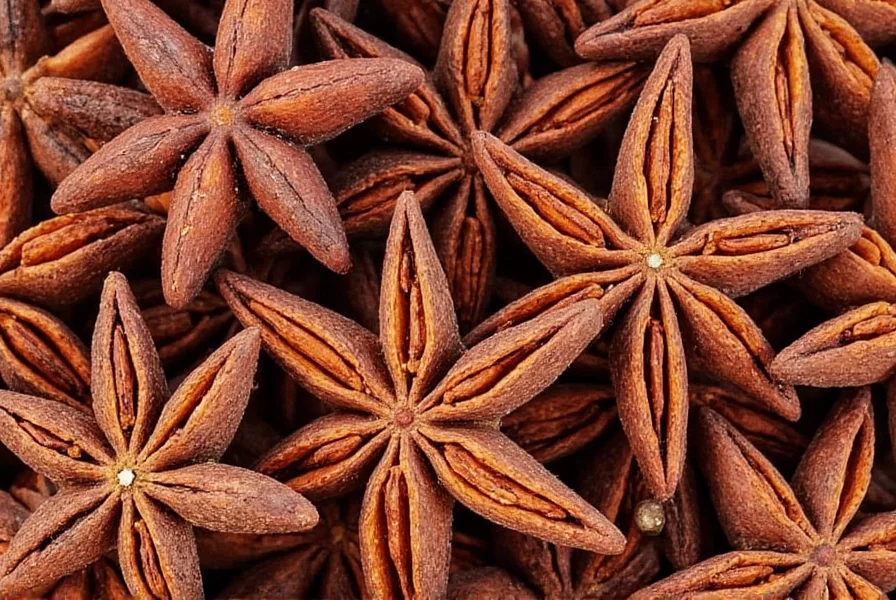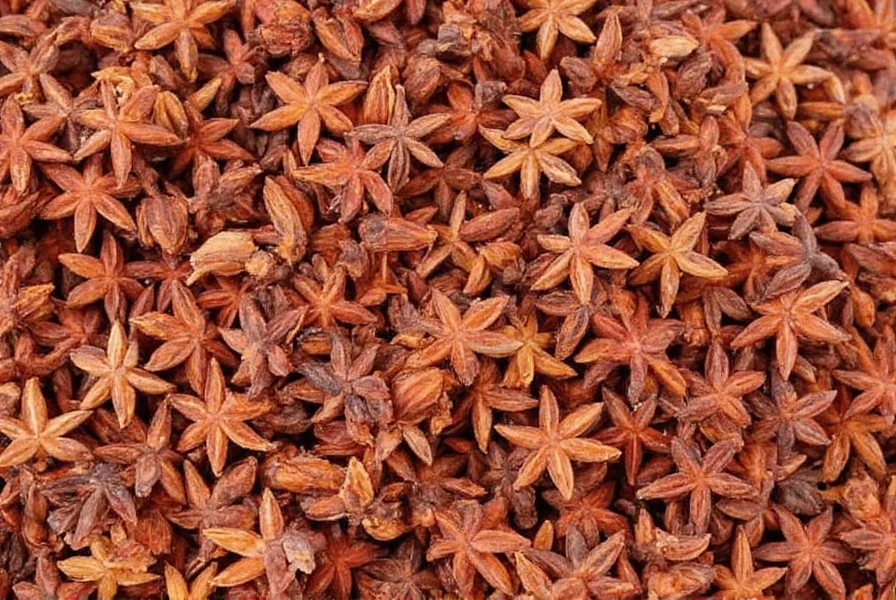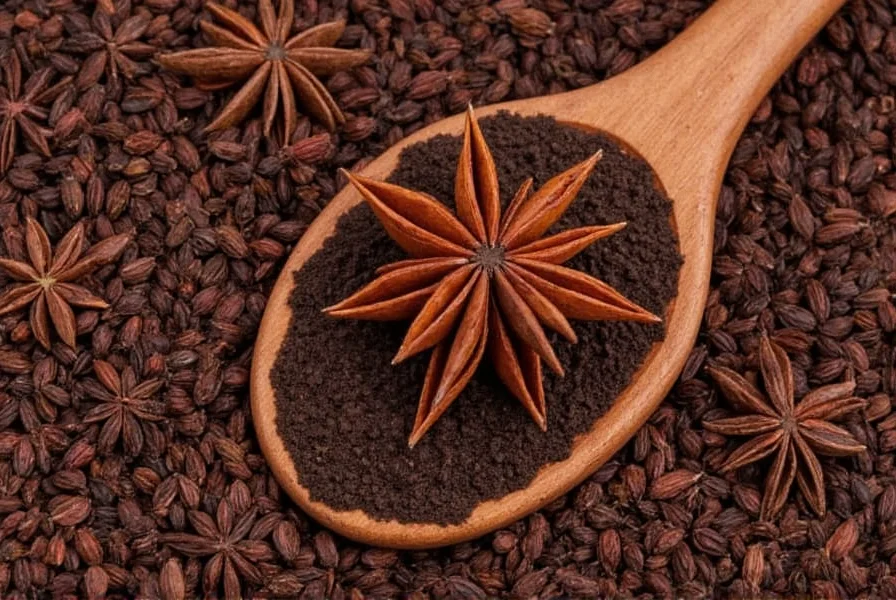When you encounter that distinctive eight-pointed star in your spice drawer, you're holding one of the world's most recognizable and versatile spices. Star anise (Illicium verum) isn't actually related to anise seed despite their similar flavor profiles, but has become indispensable in both Eastern and Western kitchens for its unique aromatic properties.
Botanical Background and Origins
Grown primarily in China, Vietnam, and India, star anise develops on evergreen trees that reach 20-50 feet in height. The spice forms as the tree's fruit matures, creating the characteristic star shape with 6-8 carpels arranged in a radial pattern. Each carpel contains a single seed, which holds the most concentrated flavor. Harvested while still green and then sun-dried until reddish-brown, authentic star anise should be uniform in color with intact points.

Flavor Profile and Culinary Applications
Star anise delivers a complex flavor that combines sweet licorice notes with subtle hints of citrus and floral undertones. Its primary compound, anethole, creates that distinctive anise-like taste that's stronger and more pungent than regular anise seed. This spice shines in both sweet and savory applications:
- Asian cuisine: Essential in Chinese five-spice powder, Vietnamese pho broth, and Indian garam masala
- Baking: Enhances fruit compotes, poached pears, and spice cakes
- Beverages: Infuses chai tea, mulled wine, and specialty cocktails
- Meat dishes: Complements duck, pork, and beef in braises and stews
| Application | Recommended Quantity | Preparation Method |
|---|---|---|
| Broths & Stocks | 1-2 whole stars per quart | Add early in cooking process |
| Baking | 1/4-1/2 tsp ground per cup of flour | Mix with dry ingredients |
| Beverages | 1 star per serving | Steep 5-10 minutes |
| Rice & Grains | 1 star per cup of liquid | Add with cooking liquid |
Whole vs. Ground: Maximizing Flavor
For optimal flavor, always choose whole star anise pods over pre-ground versions. Whole stars maintain their potency for up to 2 years when properly stored, while ground versions lose their volatile oils within 6 months. To maximize flavor extraction:
- Toast gently: Warm whole stars in a dry skillet for 1-2 minutes before use
- Crush strategically: Crack pods slightly when making broths for faster infusion
- Remove before serving: Whole stars can be unpleasant to bite into
Proper Storage Techniques
Preserve star anise's aromatic compounds by storing in an airtight container away from light and heat. Glass jars with tight-fitting lids work best. Check for freshness by crushing a small piece and smelling for that characteristic licorice aroma. Properly stored star anise maintains peak quality for 18-24 months, though it remains safe indefinitely.
Star Anise vs. Anise Seed: Clearing the Confusion
Despite their similar names and flavors, star anise (Illicium verum) and anise seed (Pimpinella anisum) come from completely different plant families. Star anise grows on trees in Asia, while anise seed comes from a flowering plant in the parsley family native to the Mediterranean. Star anise has a stronger, more complex flavor with subtle woody notes, while anise seed offers a sweeter, more straightforward licorice taste. When substituting one for the other, use 1 star anise for every 1/2 teaspoon of anise seed.
Authentic Substitutes When Star Anise Is Unavailable
When your recipe calls for star anise but you're out of stock, consider these alternatives:
- Anise seed: Use half the amount of star anise called for
- Fennel seeds: Provides milder licorice notes with herbal undertones
- Chinese five-spice powder: Contains star anise plus other complementary spices
- Fenugreek: Offers similar bitterness but lacks the licorice component
For authentic Chinese or Vietnamese dishes, however, nothing truly replicates star anise's unique flavor profile. Many traditional recipes rely on its specific chemical composition for proper flavor development.
Traditional Medicinal Applications
Beyond culinary uses, star anise has featured prominently in traditional Chinese medicine for centuries. Practitioners have used it to address digestive issues, respiratory conditions, and as a natural antimicrobial agent. Modern research suggests potential antioxidant and anti-inflammatory properties, though more clinical studies are needed. Always consult healthcare professionals before using star anise for medicinal purposes.

Signature Dishes Featuring Star Anise
From street food to fine dining, star anise elevates these iconic dishes:
- Vietnamese Pho: Essential in the broth's spice bouquet
- Chinese Red-Braised Pork: Provides depth in the master sauce
- Indian Biryani: Contributes to the complex spice blend
- Mexican Mole: Adds subtle licorice notes to the sauce
- French Coq au Vin: Modern interpretations include it for complexity
Selecting Quality Star Anise
When purchasing star anise, look for:
- Deep reddish-brown color (avoid pale or yellowish specimens)
- Intact points without cracks or breaks
- Strong, sweet aroma when crushed
- Uniform size for consistent flavor release
Beware of Japanese star anise (Illicium anisatum), which is toxic and visually similar. Authentic Chinese star anise has smoother, more rounded points compared to the sharper, more angular Japanese variety.











 浙公网安备
33010002000092号
浙公网安备
33010002000092号 浙B2-20120091-4
浙B2-20120091-4